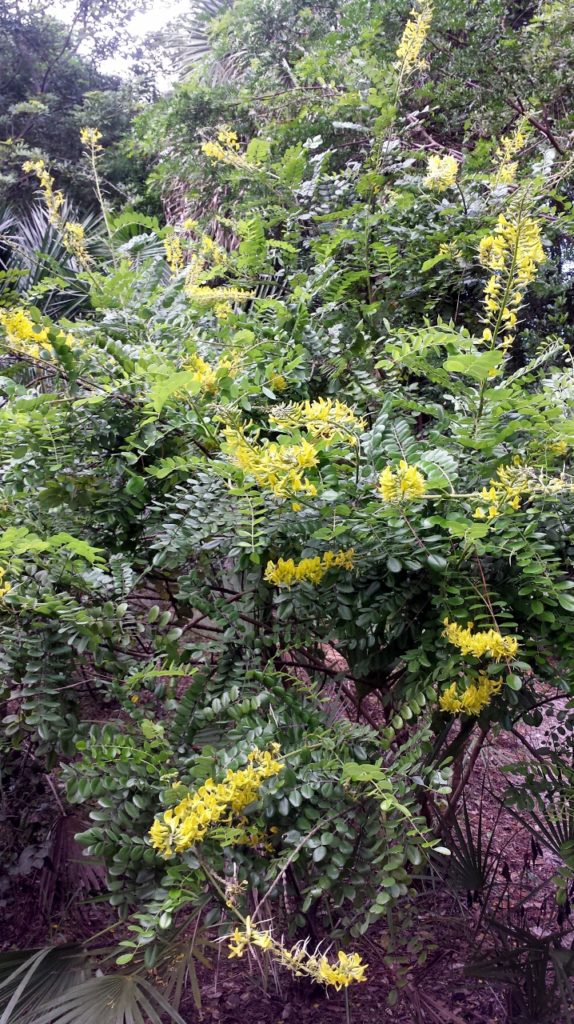
Necklace Pod
Sophora tomentosa var. truncata
Necklace Pod or Yellow Necklace pod is naturally found from the Florida Keys to Brevard County mainly along the coast. Make sure when you purchase this plant that it is the native variety truncata and not Sophora tomentosa var. occidentalis which is from the West Indies.
The native variety has new growth with short soft hairs that become glabrous or hairless about four leaves down from the top. It grows to eight or more feet tall over several years. The non native variety occidentalis has all leaves with short soft hairs and tends to be shorter than six feet tall. It also seems to die out after a few years.
Although the native Necklace Pod is tolerant of moderate amounts of salt air, it doesn’t tolerate more than brief periods of salt water flooding. Drought tolerance is excellent and dry soil with just a little organic matter is fine. The tap root is large and goes deep.
To keep Necklace Pod short, just cut it to the ground each February. It will send up many new canes and flower by summer. Do not try to cut it back to two or three feet, it will look…weird. Hummingbirds and bees like to nectar on the flowers and a moth caterpillar may occasionally show up and eat some of the leaves. More for birds to eat. Do not try eating the seeds, they are poisonous.
The silvery soft leaves are welcoming and go well near the entrance to your home. Try mixing with Sea Lavender, Sea Oxeye Daisy, Blue Saw Palmetto, Silver Palm, Key Thatch, Bitter Panicum, Sea Oates, Pineland Croton and Pineland Strongbark for a real silvery combination.
Other beach plants can be used like Coontie, Dune Sunflower, Gaillardia, Beach Verbena, Beach Cocoplum, Blackbead, Joewood, Lignum Vitae, Black Torch, Coralbean and Indigo Berry.